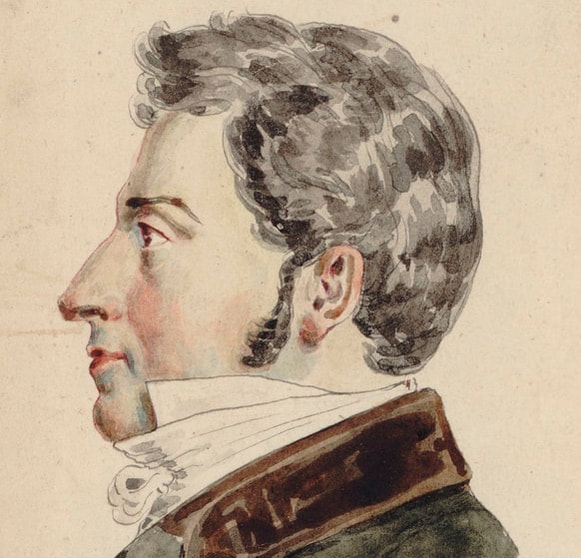Gustave Vogt (1781–1870) was the most famous oboist in Europe during the mid-nineteenth century. Throughout his career he played with the best orchestras in Paris, toured Europe widely, and also taught the next generation of oboists at the Paris Conservatoire from 1802–1853. Although many of the details of his life have been lost to history, he did leave behind a record of the esteem in which he was held. This is preserved physically in the form of an album of short musical compositions honoring Vogt, collected between 1831 and 1859. The album has never been published, and is in the collection of the Morgan Library in New York City.
The album is a collection of musical autographs consisting of compositions by some of the most famous musicians of the period. It includes a total of sixty-three entries by well-known names such as Berlioz, Rossini, Meyerbeer, Liszt, and Joachim. Of these entries some are original, while others come from well-known existing works that were very meaningful to the contributor or to Vogt, and some even appear in multiple albums, possibly as their standard musical album signature. Nineteen of these works are for solo piano, sixteen utilize the oboe or English horn, thirteen feature the voice (in many different combinations, including vocal solos with piano, and small choral settings up to one with double choir), two feature violin as a solo instrument, and one even features the now obscure ophicleide.
My dissertation consists of two parts, the first is a detailed examination of the album, its origins, and the world in which it was born. This discussion details musical and social Paris during Vogt’s life, the origin of musical albums, and examine in great detail the connections between all the contributors and their entries. The second part of the dissertation is an edition of the sixty-three entries with critical notes.
The album is a collection of musical autographs consisting of compositions by some of the most famous musicians of the period. It includes a total of sixty-three entries by well-known names such as Berlioz, Rossini, Meyerbeer, Liszt, and Joachim. Of these entries some are original, while others come from well-known existing works that were very meaningful to the contributor or to Vogt, and some even appear in multiple albums, possibly as their standard musical album signature. Nineteen of these works are for solo piano, sixteen utilize the oboe or English horn, thirteen feature the voice (in many different combinations, including vocal solos with piano, and small choral settings up to one with double choir), two feature violin as a solo instrument, and one even features the now obscure ophicleide.
My dissertation consists of two parts, the first is a detailed examination of the album, its origins, and the world in which it was born. This discussion details musical and social Paris during Vogt’s life, the origin of musical albums, and examine in great detail the connections between all the contributors and their entries. The second part of the dissertation is an edition of the sixty-three entries with critical notes.
